Graham Reid | | 2 min read
Sleeper Awake (from Rebirth)
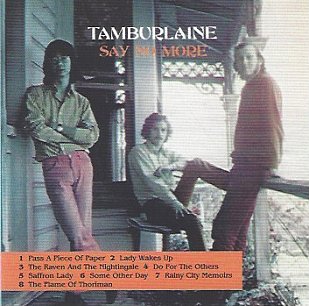
This collection of both Tamburlaine soft-rock/folk-rock albums dates from the time of flares, aviator shades, lyrics like “a whiter shade of pale” (yes, they appropriate that here) and when a woman was “a lady”.
Strange days? Indeed.
This period – the early Seventies – saw the flourishing of post-Crosby Still and Nash acoustic bands and artists which were long on earnestness and sensitive lyrics, and sometimes hugely popular.
Of the bands, Waves were undeniably among the most accomplished and whose work still stands up today, the Rumour the most chart-damaging (and softest), Farmyard took folk-prog to the ohu (commune) and artists like Shona Laing emerged in this period as confident singer-songwriters.
As with Laing, John Hanlon took politics onto the charts.
Tamburlaine – the trio of Simon Morris, Steve Robinson and Denis Leong for their debut album Say No More – followed no carved path but rather drew from a few styles: the CSN harmonies (they cover solo Stills' Do for the Others), the romantic folk-medieval narrative tradition which harked back to Anglofolk (Morris' serious The Raven and the Nightingale which heads into bluegrass hoedown territory with cheery fiddle and mandolin), Morris' Saffron Lady (there are lot of “lady” figures here) is pure CSN but has a real sense of tension, and piano, violin and flute colour Leong's quietly delightful Rainy City Memories.
Robinson's increasingly urgent Lady Wakes Up won the Silver Scroll (“in your woodbox of memories may I be a chip” perhaps doesn't stand up, nor copping the “whiter shade” image).
The interesting vagary in all this is the 10 minute-plus prog-folk, quasi-mystical The Flame of Thoriman at the end which pointed in a psychedelic folk direction. It might not have aged well in its lyrical content (although to be fair a lot of people are obsessed by that Tolkien guy, right? *) but is a fine piece of musical muscle-stretching which manages to be pop and rock without compromising their folk ethos. And really soars in its closing overs.
A few more like that and Tamburlaine would be remembered as one of our most impressive prog bands.
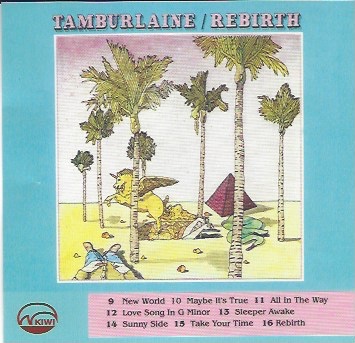 For their their subsequent album Rebirth, Leong departed and in came master guitarist Rob Winch and drummer/percussion player Mark Hansen.
For their their subsequent album Rebirth, Leong departed and in came master guitarist Rob Winch and drummer/percussion player Mark Hansen.
If the title Rebirth suggests going back to the start after that psych-prog closer on Say No More that would seem to be confirmed by Winch's opener New World which is a very close cousin to Road to Marrakesh/Suite; Judy Blue Eyes (with electric guitar).
There are some truly lovely songs on Rebirth (Winch's All in the Way with Elizabethan overtones), Robinson's soft-Beatles/European Love Song in G Minor, Morris' more complex Sleeper Awake which lets out Morris' rock chops in its opening passages before dropping back to pastoralism . . .
And as with Say No More, Rebirth ends with their epic, the nine minute-plus eco-conscious title track with Hammond organ, multi-layered vocals, a terrific piano solo and more.
And throughout the Rebirth album you might discern a little more solo McCartney (then with McCartney and the first downplaying Wings album Wild Life behind him) than CSN.
This is an interesting digitally remastered reissue of these two records because with a reprogramming of the running order you could create two separate views of Wellington's Tamburlaine out of these 16 songs: a fine folk-rock collection and a very different prog-rock selection.
Pity that this reissue didn't run to some explanatory liner notes, but I guess we have audioculture for that.
Nick Bollinger has Say No More in his 100 Essential New Zealand Albums but it sounds a bit twee in places and to these ears Rebirth is actually the more interesting and consistent.
The “lady” had left the building.
* Band member Simon Morris says, "For the record Thoriman was more Robert Browning than JRT - interestingly the same poem that inspired Steven King's Dark Tower farrago."

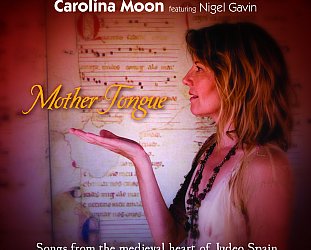
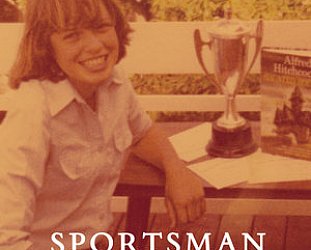

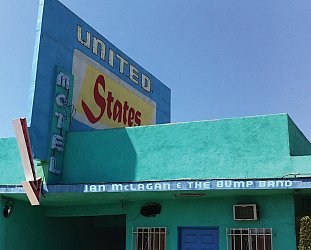
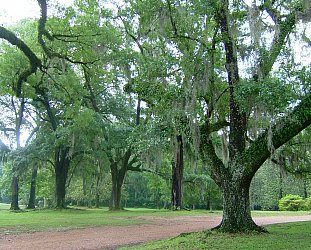
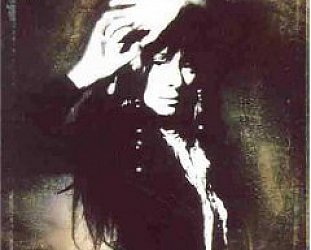
post a comment